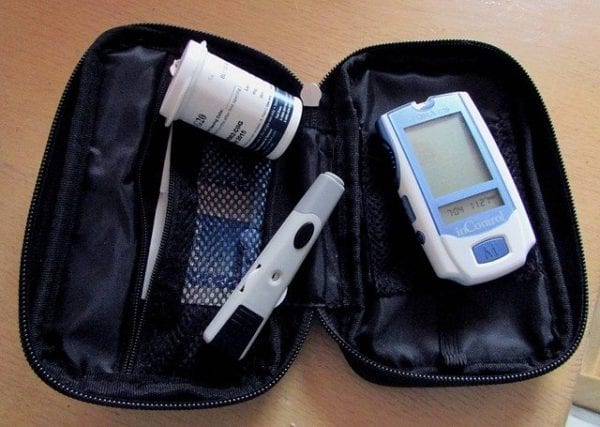Sodium-glucose co-transporter 2 inhibitors (SGLT2s) are becoming popular treatments for type 2 diabetes mellitus. While typically classified as diabetes medications, there is more and more research coming out for their benefits in cardiovascular health and heart failure. There are currently four SGLT2s on the market, all still available as brand-name only: canagliflozin (Invokana), dapagliflozin (Farxiga), empagliflozin (Jardiance), and ertugliflozin (Steglatro). We’ve provided an SGLT2 inhibitors comparison table at the end of the post.
SGLT2 inhibitors work by blocking the reabsorption of glucose in the proximal renal tubule, resulting in increased glucose excretion. This mechanism is responsible for the rare but potentially serious adverse effect of UTIs and other genital infections. Common sense tells us that an increased presence of glucose in the urine provides a hospitable environment for microorganisms. Patients should be warned about this and encouraged to have adequate fluid intake and good hygiene for prevention.
Initially approved for type 2 diabetes alone, three of the currently available SGLT2s (canagliflozin, dapagliflozin, and empagliflozin) have now been approved for treatment in patients with both type 2 diabetes and CV disease. In May 2020, dapagliflozin became the only SGLT2 approved by the FDA for use in heart failure. It is indicated in HFrEF patients with or without type 2 diabetes, which is also the first time an SGLT2 inhibitor has been approved for use in the treatment of patients regardless of diabetes status. The fourth, ertugliflozin, remains indicated only for use in the treatment of type 2 diabetes. I personally haven’t seen this agent used in clinical practice.
There is not a lot of head-to-head data comparing the various SGLT2 inhibitors. There is some evidence that suggests canagliflozin, specifically at the 300mg dose, may have slightly higher efficacy at lowering HbA1c, while meta-analysis data shows that there is no difference between agents in terms of weight loss nor reduction in systolic blood pressure. Cost can be an issue for patients, as these brand name drugs can be quite expensive, depending on insurance coverage. Formularies and the presence of concomitant CV disease or heart failure are the primary reasons a clinician will choose one SGLT2 over another. The SGLT2 Inhibitors Comparison Table below lays out the different indications.
| Agent | FDA Indications | Dosing | Other considerations |
| Canagliflozin | T2DM T2DM + CV disease | 100 – 300mg daily | Renally dosed (CI’ed GFR < 30) Not recommended with hepatic impairment |
| Dapagliflozin | T2DM T2DM + CV disease T2DM + HF Heart failure | 5 – 10mg daily | CI’ed if GFR < 30 (T2DM) Insufficient data for renal impairment in the setting of HF May increase serum creatinine |
| Empagliflozin | T2DM T2DM + CV disease | 10 – 25mg daily | Do not initiate with GFR < 45 CI’ed in ESRD May increase LDL-C |
| Ertugliflozin | T2DM | 5 – 15mg daily | Do not initiate/DC with GFR < 60 CI’ed if GFR <30 May increase LDL-C |
If you’d like to learn more about the pharmacology and adverse effects of these agents, check out this podcast on SGLT2 Inhibitors. If you are looking for more on diabetes, check out this post on which medications target pre- or post-prandial blood glucose.
This article was written by Meredith Grunig in collaboration with Eric Christianson, PharmD, BCPS, BCGP
- 30 medication mistakes PDF
- 18+ Page Drug Interaction PDF
- 10 Commandments of Polypharmacy Webinar based on my experiences in clinical practice
Study Materials and Resources For Healthcare Professionals and Students – Amazon Books
Sources:
Micromedex
FDA (December 2016). FDA approves Jardiance to reduce cardiovascular death in adults with type 2 diabetes [Press release]. Retrieved from https://www.fda.gov/news-events/press-announcements/fda-approves-jardiance-reduce-cardiovascular-death-adults-type-2-diabetes.
American Journal of Managed Care (May 2020) FDA Approves Dapagliflozin to Treat Heart Failure, Breaking New Ground in SGLT2 Competition [Press release]. Retrieved from https://www.ajmc.com/newsroom/fda-approves-dapagliflozin-to-treat-heart-failure-breaking-new-ground-in-sglt2-competition#:~:text=The%20FDA%20today%20approved%20AstraZeneca’s,if%20diabetes%20is%20not%20present.
Shyangdan DS, et al. SGLT-2 receptor inhibitors for treating patients with type 2 diabetes mellitus: a systematic review and network meta-analysis. BMJ Open. 2016 Feb 24; 6(2).
Johnston R, Uthman O, Cummins E, et al. Canagliflozin, dapagliflozin and empagliflozin monotherapy for treating type 2 diabetes: systematic review and economic evaluation [published correction appears in Health Technol Assess. 2018 Feb;21(2):219-220]. Health Technol Assess. 2017;21(2):1-218.



0 Comments
Trackbacks/Pingbacks